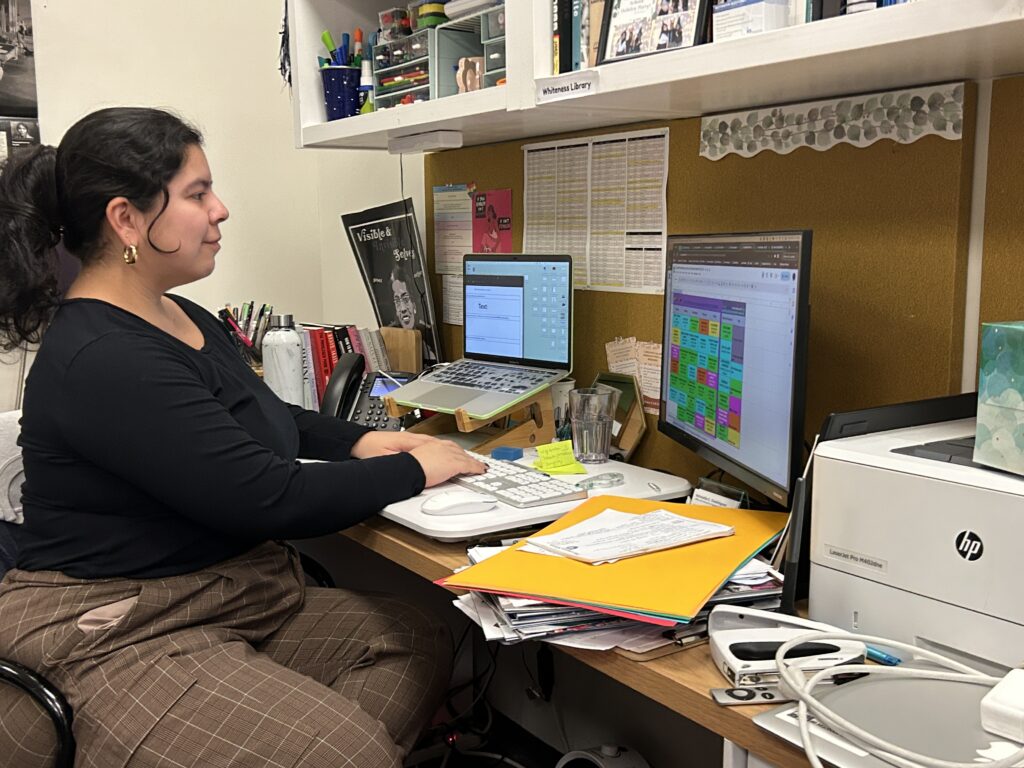Contemplating Club Times
Media provided by @gcschoolnyc on Instagram
This year’s addition of a long-awaited club block has been met with lukewarm reviews by much of the student body as the allotted time, from 8 a.m. to 9 a.m. on Wednesdays, has proven to be unproductive.
Students interviewed by The Grace Gazette suggested they were less than enthusiastic because the time slot was already an existing club block in past years and was not scheduled into the official school day, between 9 a.m. and 3:20. Also, with a singular club block time, club meetings may overlap, preventing students from exploring their various interests.
Some clubs, such as Attire Talk, meet during the school day, from 12:30 to 1:30. This time is usually available for students, as it is during both lunch blocks. Unfortunately, this time often coincides with student’s PE classes, making it difficult for some students to participate.
“The school gives multiple [times for club meetings], but blocks participation with requirements, such as PE,” Sally P. ‘26, explained.
Students can change their PE time, yet it can be difficult to find a time that lines up with preexisting schedules. Likewise, the high school does not have study hall time, except for tutorials on Wednesdays, making lunch an important block for completing homework.
On Sept. 27, 2023, students attended the annual club fair, signing up for clubs that aligned with their interests. There are a plethora of club options at Grace, with more being added every year, causing conflicts in student schedules because of the singular club block.
A fixed club block has the potential to limit the number of clubs students can join. Mary H. ‘25, a co-leader of Gender Equity and the Student Activities Committee, explains how the Wednesday club block “makes it more difficult for students who participate in multiple clubs to attend every meeting.”
Similarly, William B. ‘24, club leader of the Debate Society, said, “A single slot for all the clubs to meet would stop any conflict with school activities, but it would exacerbate conflicts between clubs. I could not attend multiple club meetings at once.”
A single meeting time could potentially disband several clubs, as students often lead multiple clubs or affinity groups.

Another idea would be to have students decide their club schedule before deciding their lunch electives, allowing students to choose clubs freely without worrying about coordinating between lunch times and elective choices. However, this may be too difficult for the administration to organize when dealing with scheduling.
Antonella Dominguez, the organizer of the club fair, also explains how “classes are more important” than clubs, giving classes priority when creating student schedules. It could be helpful for club leaders to let students know meeting times before they sign up, thus enabling students to select clubs based on their schedule.
Ultimately, the quest for the ideal club block system at the high school continues. Striking the right balance between convenience and club diversity is a challenge that will require ongoing dialogue between students, club leaders, and school administrators. As they navigate this delicate balance, the school community is committed to improving the extracurricular experience for all students.
Zarina Medeiros ‘26 is a staff writer for The Gazette.

